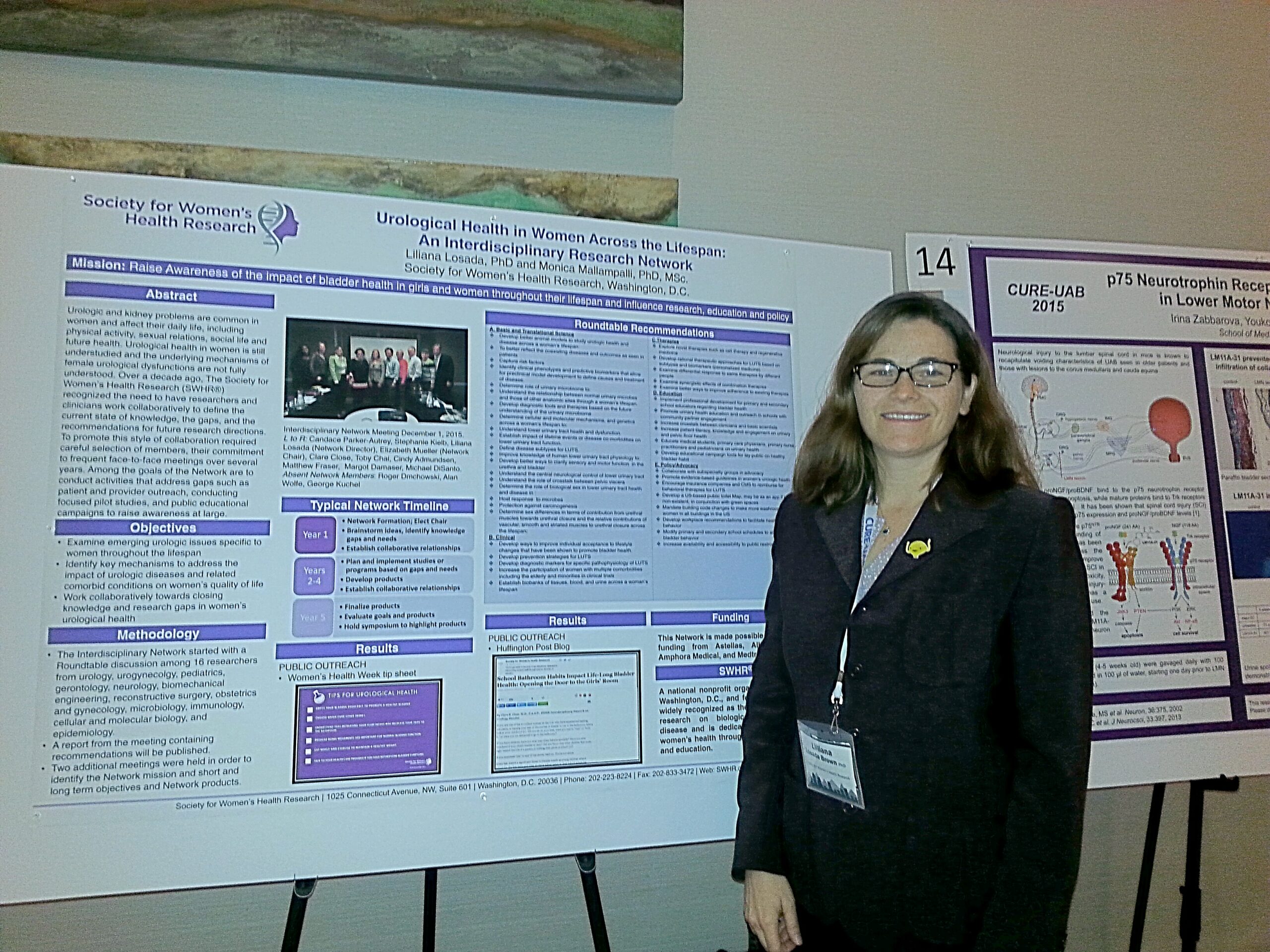Dr. Liliana Losada, associate director of scientific programs at the Society for Women’s Health Research (SWHR®) recently attended the Second International Congress on Underactive Bladder(CURE-UAB) in Denver, Colorado on December 3 and 4. Hosted by the Underactive Bladder Foundation and Beaumont Aikens Center for Neurourology, CURE-UAB is the only meeting dedicated to underactive bladder (UAB), a condition in which a person cannot empty their bladder completely.
According to the Underactive Bladder Foundation, UAB predominantly affects people aged 40 to 60 across all ethnicities [1]. Despite large numbers of UAB sufferers, research into the disease remains underfunded [1].
Experts and healthcare professionals from around the world gathered at the meeting to create dialogue on aging and UAB and to discuss ways to increase public awareness and how to translate research results into clinical care that will improve health outcomes in older adults.
Risk factors for UAB vary, including nerve damage, diabetes, spinal cord injury, obstruction, and urinary tract infections [2]. And, while aging also is a “risk factor” for developing UAB, one speaker at the meeting– Dr. Rick Schmidt, MD, urologist at Chase County Community Hospital in Imperial, Nebraska, – noted that bladder habits learned at school-age have a lasting impact on one’s urological health.
Additionally, attendees addressed the issue facing many women who are not being diagnosed for their UAB, but instead are improperly treated for depression, neuromyalgia, among other issues, for up to several years. According to JoAnn Lake, author of “Beyond Embarrassment” and a UAB patient herself, it is only after suffering through multiple urinary tract infections, which permanently injure their bladders and kidneys, that these women are referred to an urologist who finally diagnoses their UAB. Participants also emphasized greater research and funding into UAB, in order to prevent potentially harmful misdiagnoses like this.
Earlier this year, SWHR launched an Interdisciplinary Network on Urological Health of Women Across the Lifespan, of which Dr. Losada is the Program Director. The network is dedicated to raising awareness on all urological conditions that affect women, including UAB. At the CURE-UAB meeting, Dr. Losada presented a well-received poster that shared details about this urology network. Click here to learn more.
- http://www.underactivebladder.org/index.php/for-patients
- http://www.underactivebladder.org/index.php/for-patients/risk-factors
